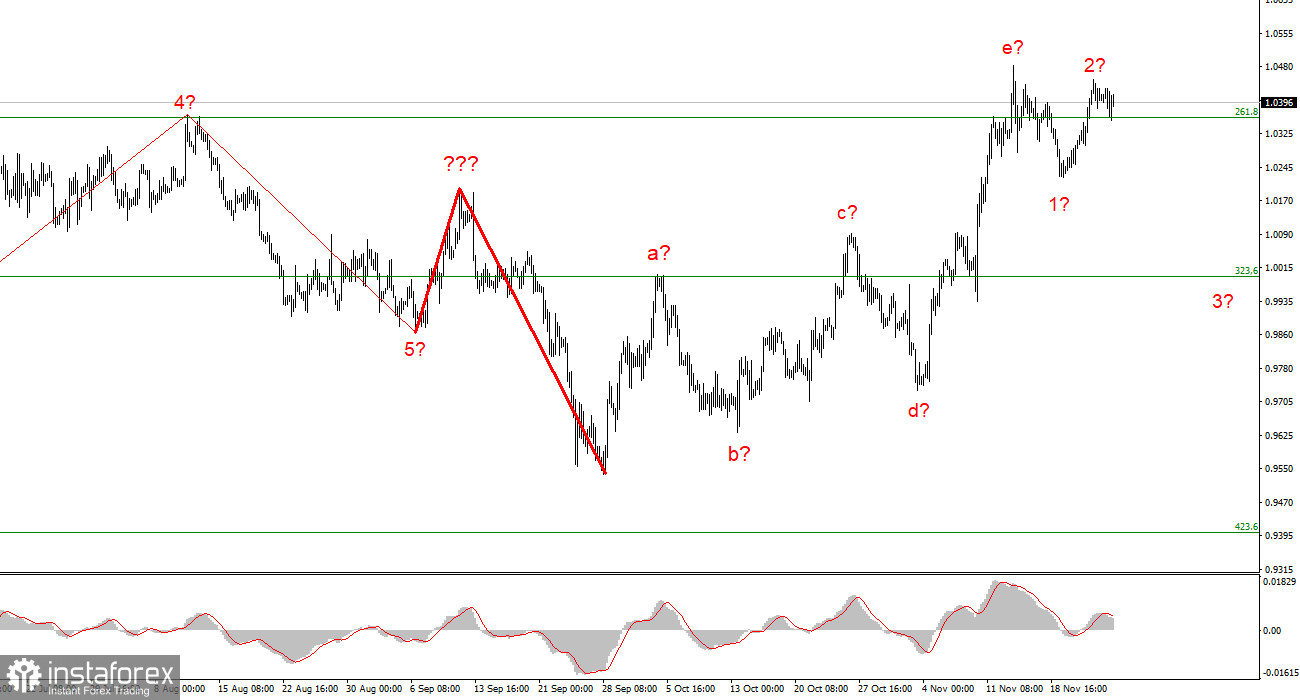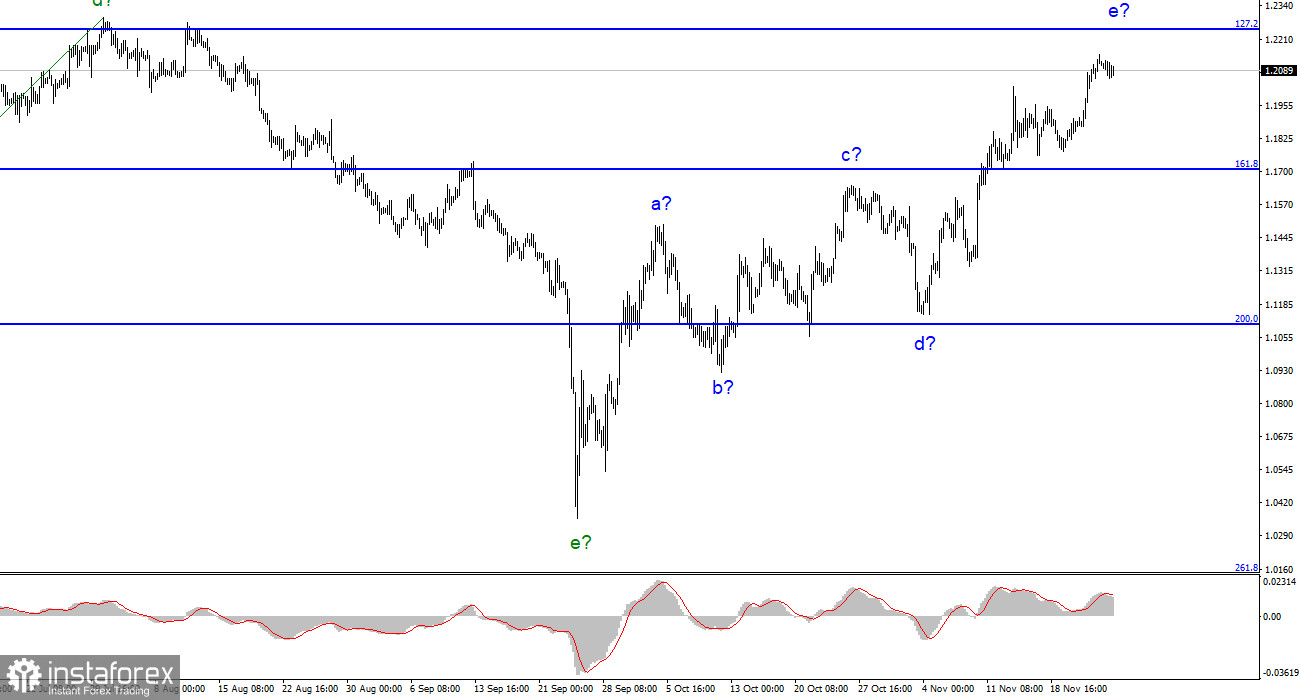The euro's first trading day of the week proved surprisingly active. Although there was no news background on Monday, the movements started in the evening and continued throughout the day and into the evening. There was some news, though, and I will now consider them.
The speech by Christine Lagarde, which offered nothing to the market, should be our first point of reference. The market now feels secure in its position and is clear on the actions the European regulator will take in the coming months due to the ECB speakers' appearances just last week. All ECB members agreed that it was important to keep raising the rate as long as inflation was still high. A preliminary report on EU inflation for November will be released this week, and the market now anticipates that it will start to slow down a bit. This might be an exceptional circumstance, or perhaps by the end of November, there won't be any slowdown. Predictions sometimes pan out.
Additionally, Isabel Schnabel gave a speech in which she said something crucial. She pointed out that the ECB is currently powerless to halt the rate increase because budgetary initiatives will cause inflation to soar. Budget plans are viewed as various initiatives to reimburse European consumers for rising electricity costs over the past year. Schnabel also pointed out that faulty inflation forecasts by central banks could result in misguided monetary policy. She added that the ECB might need to increase the rate more than initially anticipated.

This is reasonable rhetoric, given that budget incentives are almost identical to monetary incentives, which are the primary cause of the EU's (and other nations') current record-high inflation rates. Restrictive measures ought to be more stringent than they would be if the EU implements fiscal stimulus. Such rhetoric is advantageous for the euro. The market will have more justification to increase demand for the euro currency as rates in the European Union rise. We need at least three waves down based on the current wave layout. This is necessary for the markup to be completely unreadable and complex, making it much more challenging to predict something. I do not contest the possibility of a continued quote rise; even yesterday's example demonstrated this. But I'm still hoping to develop a clear trend correction section.
The upward trend section's construction is complete and has increased complexity to five waves (or is nearing completion). As a result, I suggest making sales with targets close to the estimated 0.9994 level, or 323.6% Fibonacci. There is a chance that the upward section of the trend will become more complicated and take on an extended form, but this chance is currently at most 10%.

The construction of a new downward trend segment is predicated on the wave pattern of the pound/dollar instrument. I can no longer recommend purchasing the instrument because the wave marking already permits the development of a downward trend section. With targets around the 1.1707 mark, or 161.8% Fibonacci, sales are now more accurate. The wave e, however, can evolve into an even longer form.
 English
English 
 Русский
Русский Bahasa Indonesia
Bahasa Indonesia Bahasa Malay
Bahasa Malay ไทย
ไทย Español
Español Deutsch
Deutsch Български
Български Français
Français Tiếng Việt
Tiếng Việt 中文
中文 বাংলা
বাংলা हिन्दी
हिन्दी Čeština
Čeština Українська
Українська Română
Română

